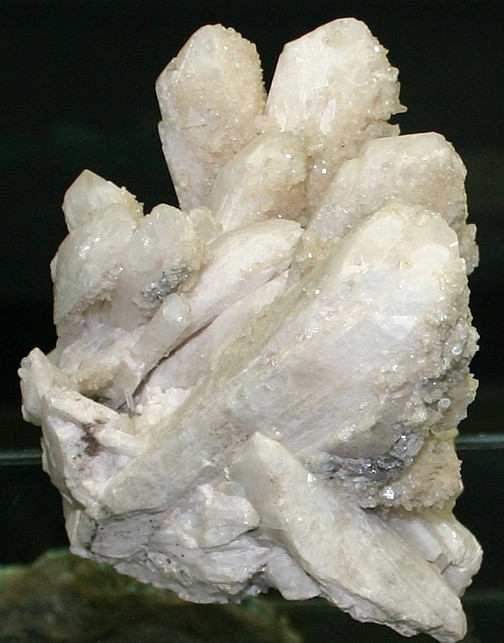|
.
Danburite
Mineral Facts:
Chemical
Formula: CaB2(Si04)2
Calcium
Boro-silicate.
Colors:
Colorless to light
yellow, when impure can be pink, honey-yellow or
dark brown.
Hardness:
ranges 7 to 7.25
Density:
2.97 to 3.02
Cleavage:
One imperfect cleavage
parallel to the basal plane (001).
Crystallography: Orthorhombic
Commonly found in prismatic crystals, closely
related to those of
topaz
in habit with a great number of forms.
Transparent to translucent.
Luster:.
Vitreous
luster.
Optics:
(Refractive Index):
a= 1.6317, b=1.6337,
y=1.6383.
|
 |
|
Composition, Structure and
Associated Minerals:
Danburite is
often a product of pneumatolytic
action, as it is found in
quartz and pegmatite veins in the vicinity of igneous rocks and on the walls
of hollows within them. It also is found in and around contact metamorphic
deposits as at San Luis
Potosi, Mexico.
Identification
and Diagnostics
Before the
blowpipe the mineral fuses to a colorless glass and colors the flame green
(positive test for boron). It is only slightly attacked by hydrochloric
acid, but after roasting is decomposed with the formation of gelatinous
silica. It phosphoresces on heating, glowing with a red light.
It is can be
separated from quartz or topaz by its positive
test for boron and imperfect cleavage.
Localities
The principal
occurrences in the US are at Danbury, Conn., where it occurs in a pegmatite,
and at Russell, N. Y., on the walls of rocks and hollows in a granitic rock.
It has also been found at Kyushu Is., Japan; Mogok, Burma,
and at Piz Valatscha,
in Switzerland.
Its principal foreign occurrence is at Charcas
in the state of San Luis Potosi, Mexico.
The Charcas
and Aurora mines are
located near the small town of Charcas
in the state of San Luis Potosi, Mexico. The mines
here have a long and productive
mining history. They have became famous for
producing the world’s finest danburite crystals,
as well as beautiful calcite and rare natural
citrine crystals all of which are found in vugs in the
ore. The mines work a
lead-zinc-copper-silver deposit. Ore minerals include abundant
dark-brown
sphalerite,
pyrite,
galena,
chalcopyrite,
tetrahedrite and traces of silver-sulfosalts. The replacement ore occurs
as massive
sulfide ore, breccia ore, but
mostly as banded “zebra ore”, where bands of ore minerals intercalate with
bands of course crystalline
calcite
and minor
quartz.
.Return
to the
Mineral Collectors Information Page |
|


